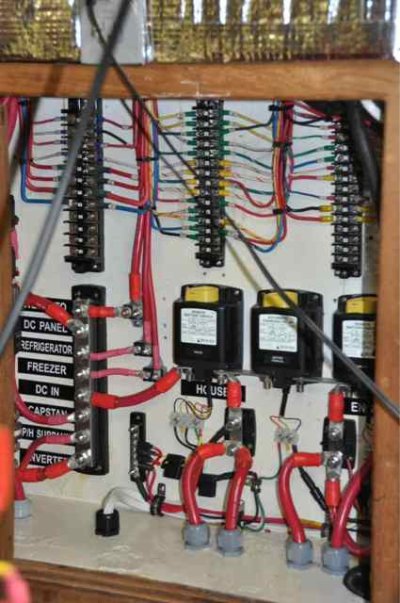JDCAVE
Guru
- Joined
- Apr 3, 2011
- Messages
- 2,905
- Location
- Canada
- Vessel Name
- Phoenix Hunter
- Vessel Make
- Kadey Krogen 42 (1985)
Phoned the West Marine last week and got a quote for:
Magnum Energy MS2812 (MAG MS 2812). 2800 watt Inverter/125 Amp Charger
MS Series Inverter/Charger - Magnum Energy, Inc.
Magnum Energy ERC50 control panel (MAG ME RC-50)
ME-RC Remote - Magnum Energy, Inc.
and the Magnum Energy Battery Monitor Kit (MAG ME-BMK)
Battery Monitor Kit (ME-BMK) - Magnum Energy, Inc.
Also the SiTex MDA1 AIS.
Phoned today and the quoted prices in Cdn $ that were 15% higher. Asked for last weeks prices and got it! Whew!
Just picked these up. $2,700 later!
Going to be a bit of a challenge to figure out where to mount it. The I/C unit is 55 lbs. don't want that flying around when seas get rough!
The current Freedom 20 is installed in al location such that the DC cabling (AWG 2/0) is 24' long. Going to try and cut that down to 12' if possible. The Freedom 20 weighs 52 lbs.
Jim
Sent from my iPad using Trawler Forum
Magnum Energy MS2812 (MAG MS 2812). 2800 watt Inverter/125 Amp Charger
MS Series Inverter/Charger - Magnum Energy, Inc.
Magnum Energy ERC50 control panel (MAG ME RC-50)
ME-RC Remote - Magnum Energy, Inc.
and the Magnum Energy Battery Monitor Kit (MAG ME-BMK)
Battery Monitor Kit (ME-BMK) - Magnum Energy, Inc.
Also the SiTex MDA1 AIS.
Phoned today and the quoted prices in Cdn $ that were 15% higher. Asked for last weeks prices and got it! Whew!
Just picked these up. $2,700 later!
Going to be a bit of a challenge to figure out where to mount it. The I/C unit is 55 lbs. don't want that flying around when seas get rough!
The current Freedom 20 is installed in al location such that the DC cabling (AWG 2/0) is 24' long. Going to try and cut that down to 12' if possible. The Freedom 20 weighs 52 lbs.
Jim
Sent from my iPad using Trawler Forum

 If it's repairable, have it repaired.
If it's repairable, have it repaired.